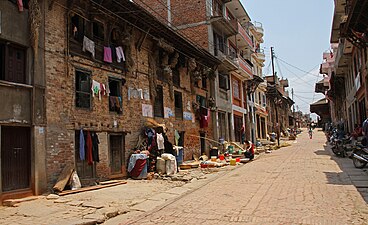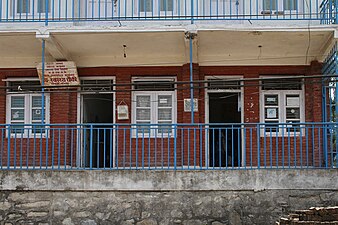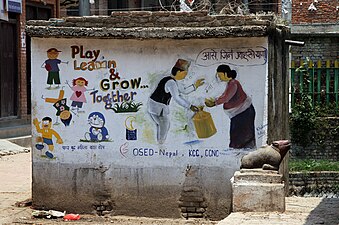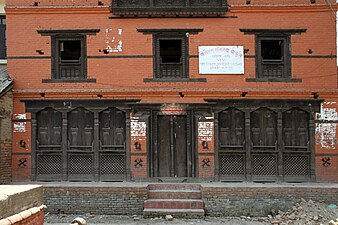This article needs additional citations for verification .(August 2020) |
Khokana खोना Jitapur | |
|---|---|
part of lalitpur Metropolitant | |
 Dyo Pukhu Jatra | |
| Nickname: land of oil/ khona | |
| Coordinates: 27°38′N85°17′E / 27.64°N 85.29°E | |
| Country | |
| Zone | Bagmati Zone |
| District | Lalitpur District |
| Population (2011) | |
• Total | 12,786 |
| Time zone | UTC+5:45 (NST) |
Khokana is a former Village Development Committee (VDC) which has been merged with the neighbouring VDC's of Bungamati, Chhampi, Dukuchhap, Sainbu and other 38 VDC's to form the Metropolitan City of Lalitpur in Lalitpur District in the Bagmati Zone of central Nepal. At the time of the 1991 Nepal census, Khokana had a population of 4258 living in 699 individual households. [1] According to 2011 Nepal census, Khokana had a population of 4927 living in 1056 individual households. [2]
Contents
- Legends / History
- Etymology
- Landmarks / Places of Interest
- Rudrayani Temple
- De pukhu
- Other Ponds
- Jitapur Mandap
- Sikali (Sikali) Temple
- Tradition & Culture
- Festivals and Rituals
- Gallery
- References
- External links
Khokana, a traditional and small Newari village about 8 kilometers south of Kathmandu (on the outskirts of Patan). Khokana is mainly known for the production of rich mustard oil since ancient time. It was also the first town in Nepal to be lit with electricity in 1911 AD during the reign of Rana Prime Minister Chandra Shamsher.
Khokana has been nominated to be listed as a Unesco World Heritage, representing a vernacular village and its mustard-oil seed industrial heritage. [3]











